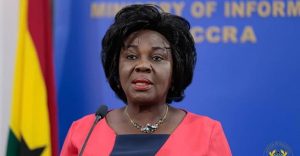Motorcycle crashes in the first six months of this year reduced by 12.35 per cent compared to the same period last year.
Between January and June last year, there were 3,157 crashes while the figure dropped to 2,767 this year.
This is contained in the National Roads Safety Authority (NRSA) statistics for January to June 2022 on the Road Traffic Crash and Casualty Situation in the country.
The first six months of this year also witnessed a significant reduction in road crashes, injuries and deaths (CIDs) as compared to last year.
This statistics for the first half of the year is attributed to the sustained educational campaign and Stay Alive campaign by the National Roads Safety Authority (NRSA) as well as the roles played by various stakeholders including the police and transport organizations.
General decline
Also per the statistics, road crashes reduced by 6.12 per cent from 8,188 in 2021 to 7,687 in 2022.
Persons injured also reduced by 2.33 per cent from 8,188 in 2021 to 7,997 in 2022.
Deaths also saw a significant reduction of 10.59 per cent from 1,454 in 2021 to 1,300 this year.
With regard to the vehicle type, commercial vehicles involved in road crashes last year were 4,948 while this year is 4,619, showing a reduction of 6.65 per cent.
In the case of private vehicles, crashes dropped by 0.1 per cent from 5,868 in 2021 to 5,862.
Motorcycle also reduced by 12.35 per cent from 3,157 last year to 2,767 this year.
Pedestrian knockdowns also came down from 1,470 in 2021 to 1,356, representing a 7.76 per cent drop.
Influence
Responding to the reductions in CIDs, the acting Chief Executive Officer of the NRSA, David Adonteng, told the Daily Graphic that he was very much convinced that the drop in motorcycle crashes influenced the reduction in the others.
“Now, I am very much convinced that the reduction in motorcycle crashes has influenced the entire reductions in all crashes, injuries and deaths,” he said.
The police, the NRSA Executive Director explained, also played a great role by joining the authority under the Stay Alive campaign by deepening enforcement by titling it “war against indiscipline” adding “you could see how the police came out in their numbers to scale up enforcement.”
That, he said was by following up the war against indiscipline with other initiatives such as the Police Action Against Rider Indiscipline and the Police Invisible Eye.
Among the interventions was the sustained education campaign by the police to get motor cyclists to ride safe by having their helmets on and stopping at the red lights instead of the old strategy when riders were threatened and harassed.
That, the acting Director of the NRSA said had changed the behaviour of motorcyclists.
“I would say that if you look at the statistics again, motorcycle involvement in road traffic crashes has reduced considerably, 12.35 per cent.
Motivating
Mr Adonteng indicated that the reductions in the CIDs were very motivating in that “for the first time in the history of this whole road safety management, all the three indicators — crashes, injuries and deaths have all been reducing consistently from January to June on month to month basis this year.
“Being able to reduce road crash deaths by 10.59 per cent is huge and quite significant in the effort to keep our roads safe and hopefully, that can be sustained,” saying the NRSA and the other stakeholders leading in the campaign were motivated by the strides made.
Commendations
Mr Adonteng commended the authority’s frontline team and stakeholders including non-governmental organizations, civil society organizations (CSOs) and particularly the media, who championed the stay alive campaign.
He said the media’s advocacy role and sensitization helped to bring on board “our public service institutions who are responsible for road safety to come along with us.
“This is because previously, there was not much involvement, but this time, we were able to pull along all agencies responsible for helping to make and keep our roads safe.
In addition, Mr Adonteng said the media provided the platform for the authority to advocate for dualization and cited the dualization of the Nsawam to Apedwa and quantifying the benefits in terms of removal of head-on collision.
Before then, he said the stretch was known for head-on collision since it used to be a single carriageway.
Mr Adonteng said the campaign would be sustained to ensure that the roads were very safe.







